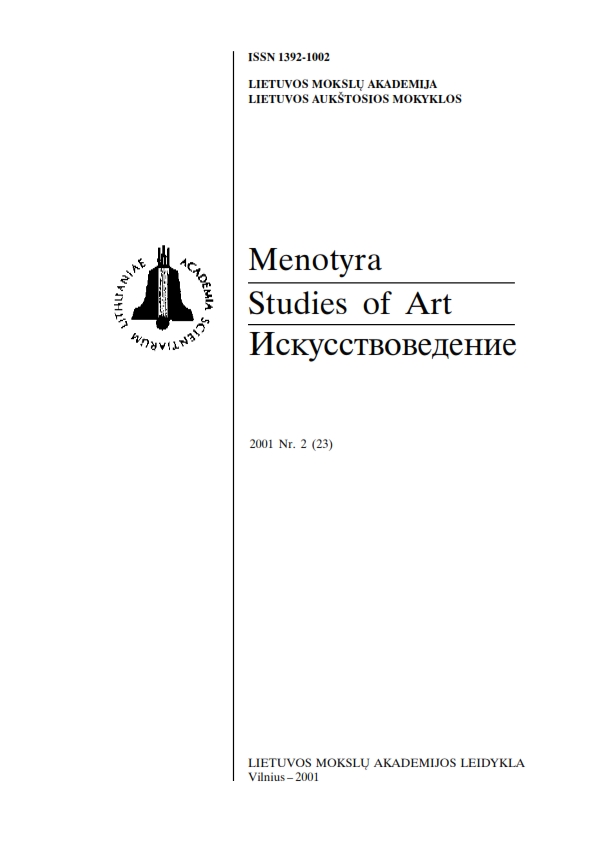Epitafinės kompozicijos Vilniaus Šv. Kazimiero jėzuitų bažnyčios kriptoje
Epitaphial compositions in the crypt of St. Casimir (Jesuit) church in Vilnius
Author(s): Neringa MarkauskaitėSubject(s): Christian Theology and Religion, Visual Arts
Published by: Lietuvos mokslų akademijos leidykla
Summary/Abstract: The burial crypt of the Vilnius St. Casimir Church with its mural compositions located under the great altar was discovered in 1991. So far no specific historic documents about the discovered epitaphial compositions have been available. It is thought that they were forgotten in the 19th century when the crypt was buried under the earth while reconstructing the Church into the Orthodox Church.In 1996 these compositions were preserved, however, they were not restored; therefore restorers or art historians did not study them in detail. For this reason it is difficult to present both the preliminary date and the technique of painting these black and white murals.The objective of this article is the iconographic analysis of the compositions of the crypt. Attempts have been made to reveal the main ideas of the iconography of the compositions, the peculiarities of artistic expression and the interaction between the text and the image. As only fragments of the quotations of the crypt inscriptions have remained, they were reconstructed, the missing words have been restored, and references of the quotations and inscriptions were compared with the Vulgate text.Three main compositions representing the Crucifixion, resurrected Christ and Virgin Mary form the basis of the iconographic program of the crypt. These compositions are difficult to define in accordance with certain iconographic schemes. It is easier to define them by iconographic types. The compositions of the Crucifixion are closer by their typology to the works of the Renaissance or early baroque than to the works of the mature baroque. The composition of Virgin Mary is difficult to attribute to the iconographic type known in the art tradition.The three main compositions are supplemented by other compositions representing figures of souls of the decreased which have come to life as if from their coffins. These figures are noted for the way of their presentation. Though they are painted in a schematic manner (in many places only fragments have remained), these compositions can be understood as tombstone, probably, epitaphial, portrait images. Epitaphial compositions reflect some features of the expression of emblematic thinking, for example, a notional relation between the image and the text, as well as expressions of artistic rhetoric, e.g. the language of movements and gestures of the figures. The clue to many figures in the compositions is hidden in the quotations of the compositions, which were taken from the Vulgate and prayers. The artistic expression of the compositions enables us to make the supposition that they could have been partly reconstructed or renewed. This is attested by several layers of the drawing and part of the inscriptions containing features of different handwriting. They could have been re-written or made more distinct. Epitaphial compositions reflect the cult of praying for the souls suffering in the Purgatory, as well as piety shown by the Jesuits to Jesus Christ and Virgin Mary.
Journal: Menotyra
- Issue Year: 2001
- Issue No: 2(23)
- Page Range: 11-20
- Page Count: 10
- Language: Lithuanian

